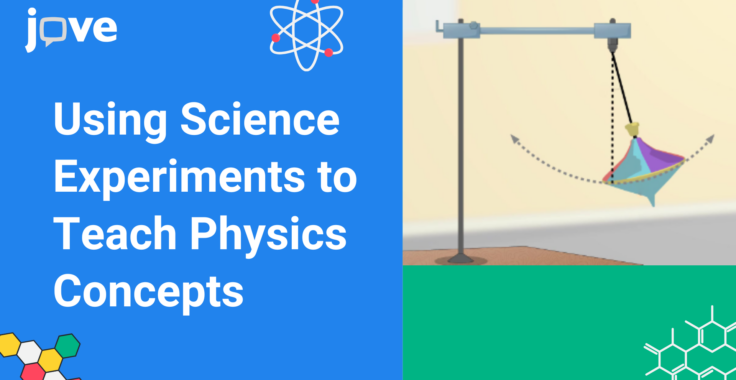
Using Science Experiments to Teach Physics Concepts
Teaching high school physics doesn’t have to feel like a tug-of-war between theory and reality! Imagine turning abstract concepts into exciting, hands-on learning moments. Studies show that students grasp up to 70% more when they’re actively involved, like in lab experiments or interactive lessons, rather than sitting through lectures (source).
This is where JoVE steps in with its vast library of digital resources for physics education—think of it as your toolkit for making physics both tangible and fun.
Let’s explore practical strategies for using hands-on experiments to make physics resonate with high school students and keep them coming back for more!
How to Use Hands-On Science Experiments to Teach Physics in High School
In high school physics, engaging students with hands-on science experiments helps them connect theoretical knowledge with practical understanding. JoVE’s video collection includes demonstrations that cover key physics topics such as energy transfer, force and motion, and principles of mechanics. Here are practical ways to incorporate these concepts:
- Energy Transfer Experiments: Students can watch JoVE’s videos on kinetic and potential energy, then perform experiments using ramps and objects of various weights to observe energy conversion firsthand.
- Newton’s Laws in Action: Using simple tools like balls, inclined planes, or friction blocks, students can follow JoVE’s demonstrations of Newton’s laws to understand motion and force.
- Wave Properties: JoVE’s videos on wave interference and refraction provide students with visual insights into wave behavior, which they can replicate in class with water or light experiments.
How Educational Videos Can Help Students Master Complex Biology Topics
JoVE’s educational videos enable students to dive deeper into physics concepts by visualizing experiments before trying them out. These video resources for interactive physics experiments offer step-by-step instructions that enhance understanding and help students feel confident in conducting their own experiments.
JoVE’s video resources cover a range of essential physics concepts, making it easier for students to grasp challenging topics. Here are three ways these videos enhance physics learning in the classroom:
1. Visualizing Forces and Motion
Through JoVE’s video resources, students can observe forces in action, such as friction and acceleration, within real-world scenarios. These videos simplify complex setups, allowing students to focus on core physics principles.
2. Understanding Thermodynamics with Hands-On Simulations
JoVE provides simulations that explain thermodynamic processes, such as heat transfer. Students can see these concepts in action by watching simulations on temperature changes, which can be further explored through in-class experiments with temperature-sensitive materials.
3. Electricity and Circuits
JoVE’s detailed video tutorials on circuit building and electrical resistance offer students an interactive experience to understand electrical properties. This hands-on approach to learning circuits makes abstract concepts like current, voltage, and resistance more accessible.
How Science Experiments Enhance Student Understanding of Physics
Engaging students in hands-on physics experiments builds foundational skills in inquiry-based learning. By interacting directly with physics phenomena, students not only comprehend concepts better but also become more inquisitive. Experiments provide a framework where students can observe cause-and-effect relationships, make predictions, and test hypotheses, all while reinforcing classroom lessons.
For example, using JoVE’s video on projectile motion, students can explore variables that affect projectile trajectories, such as angle and force. This active experimentation deepens their grasp of physics concepts and encourages critical thinking.
Why JoVE is Essential for High School Physics Education
JoVE’s resources align with high school curriculum needs, giving teachers tools to make science experiments engaging and effective. By integrating digital resources for physics education, educators can enhance student learning, making complex topics accessible and memorable. JoVE’s videos cover everything from introductory physics principles to more advanced STEM activities, helping students succeed.
For teachers looking to align their lessons with educational standards, JoVE offers a helpful guide on How to Effectively Implement NGSS Standards in High School Physics Classes with JoVE. By integrating digital resources for physics education, educators can enhance student learning, making complex topics accessible and memorable.
Conclusion
Incorporating science experiments into high school physics fosters an engaging, hands-on learning experience that enhances student understanding and retention. With JoVE’s videos, teachers can integrate interactive physics experiments that bring theoretical concepts to life. Ready to transform your physics curriculum with engaging experiments? JoVE offers thousands of resources to enrich high school physics, from energy studies to electromagnetism, making learning both interactive and fun.